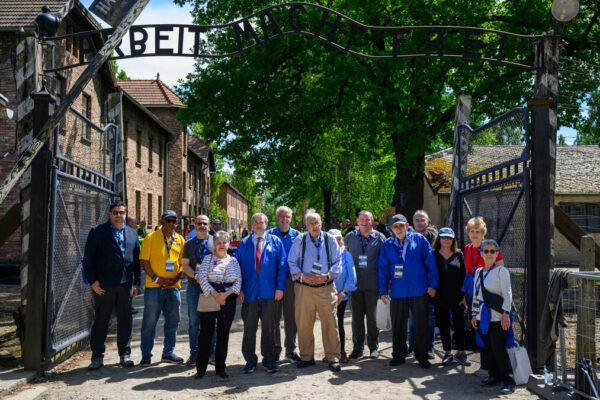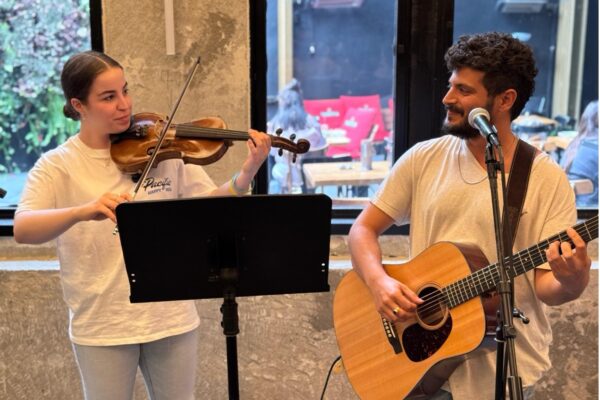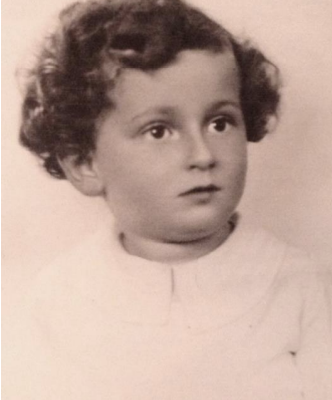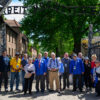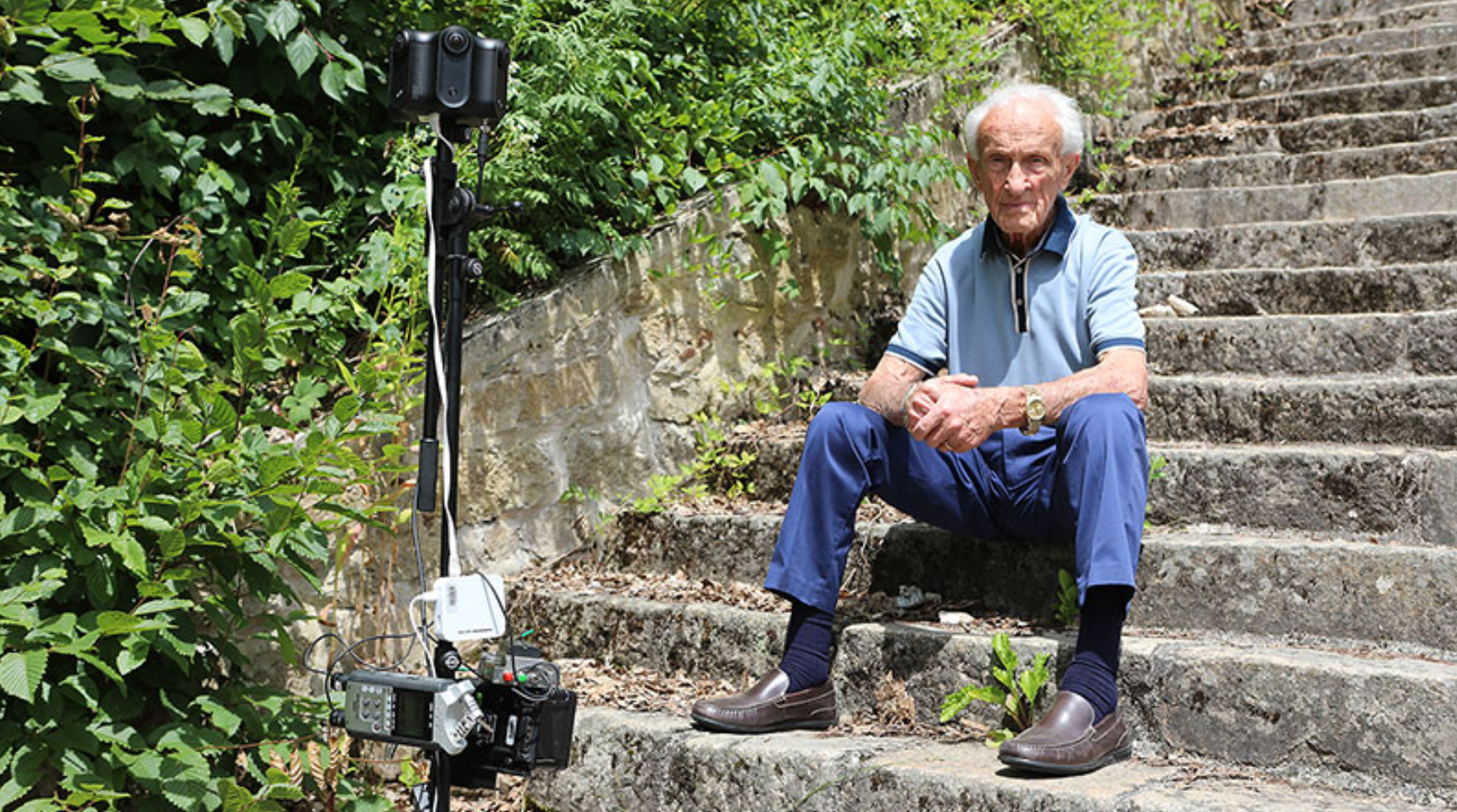
Up and down, up and down. All day, every day.
From the base of a stone quarry, inmates of the Mauthausen concentration camp in Austria were compelled by Nazis during the Holocaust to climb 186 steps to the top, lugging boulders that would be used for German state construction projects.
Among those forced to take part in this sadistic form of slave labor was Edward Mosberg.
Last week, the 92-year-old real-estate developer from New Jersey returned to the site, where he spent five weeks in 1944. With him was a camera crew from USC Shoah Foundation, which is producing a 360-degree testimony with Mosberg as a narrator, who walks through the camp – now a museum – recalling the horrors that he experienced firsthand.
“It gives me no pleasure to come here, believe me,” he said, sitting on one of the stone steps – known as the “Stairs of Death” – upon which he once labored, speaking to a small, unobtrusive camera with six fish-eye lenses. “I only do it so that we do not forget the Holocaust and remind people what the German murderers did!”
The testimony will be the second of its kind by USC Shoah Foundation, whose first 360-degree testimony came in the form of a 15-minute VR documentary that takes viewers on a harrowing tour of the Majdanek concentration camp in Poland. Called “The Last Goodbye,” the critically acclaimed 2017 film is narrated by Pinchas Gutter, who survived the death camp but lost his parents and twin sister there.
Stephen Smith, USC Shoah Foundation’s Finci-Viterbi endowed executive director – who was on hand for the July 7 production — says he avoids the term “virtual reality” when it comes to filming testimonies on site in 360 degrees.
“There is nothing virtual about this medium,” Smith wrote in a post on Facebook. “It is testimony, taken on location and filmed with many lenses rather than one.”
Smith says filming in 360 is no less authentic a medium for testimony than the 55,000 traditionally recorded video testimonies in USC Shoah Foundation’s Visual History Archive.
“In 360 the entire landscape is a part of the film,” he said in the post. “The location of the camera is an artistic choice, the placement of the subject is an artistic choice, but thereafter, whatever happens in that environment is captured as it unfolds.”
Like Gutter, Mosberg lost his entire family – his parents and sisters – in the Holocaust. And like Gutter, Mosberg suffered through more than one concentration camp.
At Mauthausen this month, USC Shoah Foundation filmed Mosberg speaking about his experiences at eight locations. They include not only the quarry from which inmates hoisted heavy boulders, but also the main gates to the camp, the area where prisoners were processed – known as the wailing wall for all of the crying that occurred there – the showers where Mosberg was shunted during processing and a cemetery that was once the site of a barracks where he stayed.
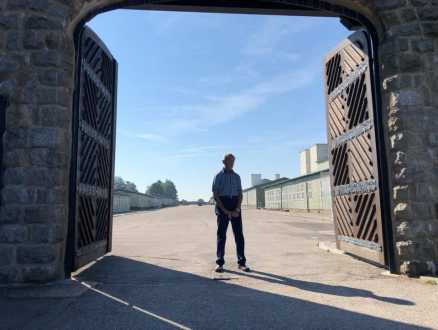 In his 360-degree testimony, Mosberg – who also gave a traditional testimony to USC in 2017 — describes the kapos, the beatings, and the “Jewish Parachute jump,” where unlucky inmates were pushed to their death over the cliff edge.
In his 360-degree testimony, Mosberg – who also gave a traditional testimony to USC in 2017 — describes the kapos, the beatings, and the “Jewish Parachute jump,” where unlucky inmates were pushed to their death over the cliff edge.
The filming means that, just as “The Last Goodbye” creates a fully immersive experience that enables viewers to virtually walk with Gutter as he tours the railway car, gas chamber, shower room and barracks of Majdanek, viewers may one day be able to take a similarly guided tour at Mauthausen.
The Institute made a clear choice not to film Mosberg at any place in Mauthausen where he did not have specific memories, unless that environment was representative of a similar space. An example: The actual barracks in which Mosberg stayed no longer exist, but he is filmed in a similar one where he describes the sleeping arrangements.
However, the Institute did film in several key locations around the camp that Mosberg has no memory of – such as the gas chambers and crematoria — as empty spaces without his narrative.
Such footage can be used alongside traditional life-history testimonies from the Visual History Archive, Smith said.
“Previously recorded testimonies about those places can be inserted as voice over or video windows into the landscape,” he said.
Also participating in the shoot were three other employees from the Institute: Ryan Fenton-Strauss, who served as director; Kia Hays, as producer; and Florian Köppl, as a production assistant.
“We do not know the future of the 360 industry, but even if the commercial VR world does not ultimately thrive, we do know that what we capture on location in 360 will be preserved as testimony in the USC Shoah Foundation archive for future generations to use as they see fit,” Smith said.
Holocaust survivor Edward Mosberg describes how he was separated from his sisters at Plaszow concentration camp, and the guilt he has always felt for how it happened.
